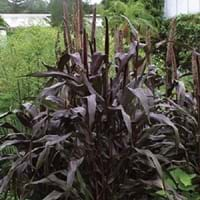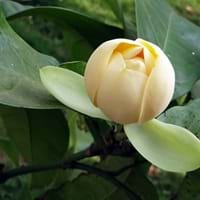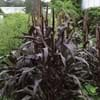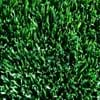Life Span
Annual and Perennial
Perennial
Origin
Africa
Cambodia, China, India, Indonesia, Papua New Guinea, Philippines, Singapore, Thailand, Viet Nam
Types
Not Available
Magnolia angatensis, Magnolia beccarii, Magnolia championii
Habitat
Sunny Edge, Warmer regions
Wide range of ecological site
USDA Hardiness Zone
8-11
10-15
AHS Heat Zone
12 - 8
Not Available
Sunset Zone
8, 9, 10, 14, 15, 16, 17, 18, 19, 20, 21, 22, 23, 24
Not Available
Habit
Upright/Erect
Oval or Rounded
Flower Color
Brown, Purple, Purplish-black
Gold, White, Yellow
Flower Color Modifier
Bicolor
Bicolor
Fruit Color
Brown, Cream
Brown
Leaf Color in Spring
Purple, Dark Green, Burgundy
Green
Leaf Color in Summer
Light Green
Green
Leaf Color in Fall
Purple, Dark Green, Burgundy
Green, Yellow green
Leaf Color in Winter
Not Available
Gray Green
Leaf Shape
Long Linear
Ovate
Plant Season
Spring, Summer, Fall
Spring, Summer
Sunlight
Full Sun
Full Sun, Partial Sun
Growth Rate
Very Fast
Medium
Type of Soil
Loam, Sand
Clay, Loam
The pH of Soil
Neutral, Alkaline
Acidic, Neutral
Soil Drainage
Well drained
Well drained
Bloom Time
Summer, Late Summer, Early Fall, Fall
Spring, Late Spring
Tolerances
Not Available
Not Available
Where to Plant?
Container, Ground, Pot
Ground
How to Plant?
Seedlings
Seedlings, Transplanting
Plant Maintenance
Medium
Medium
Watering Requirements
Requires regular watering
Prefer drip-irrigation instead of Over-head watering
In Summer
Lots of watering
Lots of watering
In Spring
Moderate
Moderate
In Winter
Average Water
Average Water
Soil pH
Neutral, Alkaline
Acidic, Neutral
Soil Type
Loam, Sand
Clay, Loam, Sand
Soil Drainage Capacity
Well drained
Well drained
Sun Exposure
Full Sun
Full Sun, Partial Sun
Pruning
Prune in winter, Remove damaged leaves, Remove dead branches, Remove dead leaves
Prune if you want to improve plant shape
Fertilizers
15-0-15, All-Purpose Liquid Fertilizer
Fertilize in late fall, fertilize in spring, Requires high amount of nitrogen
Pests and Diseases
Alternaria Leaf Spot, eyespot, Red blotch
Aphids, Bacterial Blight, Canker, Crown gall, Hoplia beetle, Leaf burn, Leaf spot, Mealybugs, Powdery mildew, Red blotch, Scorch, Soft scales, Thripes, Wetwood
Plant Tolerance
Deer resistant, Drought
Not Available
Flower Petal Number
Single
Single
Foliage Texture
Coarse
Coarse
Foliage Sheen
Not Available
Matte
Attracts
Aphids, Bees, Birds
Not Available
Allergy
Unknown
Not Available
Aesthetic Uses
along a porch, deck or patio, Beautification, Informal Hedge, Mixed Border, Showy Purposes, Wild gardens
Showy Purposes
Beauty Benefits
No Beauty Benefits, Not Available
Treatment of Dark Spots
Environmental Uses
Air purification
Air purification
Medicinal Uses
Not Available
Alzheimer’s Disease, Anxiety, Cancer, Digestion problems, Liver problems, Menstrual Cramps, Respiratory Disorders, Weight loss
Part of Plant Used
Branch, Flowering Tips, Whole plant
Whole plant
Other Uses
Beneficial species for attracting pollinators, repels deer
Used as Ornamental plant, Used for its medicinal properties
Used As Indoor Plant
No
Yes
Used As Outdoor Plant
Yes
Yes
Garden Design
Bedding Plant, Container, Cutflower, Dried Flower/Everlasting, Mixed Border
Feature Plant, Foundation, Shade Trees
Botanical Name
PENNISETUM glaucum 'purple millet'
Magnolia liliifera
Common Name
Millet, Pearl Millet
Egg magnolia
In Hindi
purple millet
Magnolia liliifera
In German
purple millet
Magnolia Liliifera
In French
millet pourpre
Magnolia Liliifera
In Spanish
purple millet
Magnolia Liliifera
In Greek
purple millet
Magnolia Liliifera
In Portuguese
purple millet
Magnolia Liliifera
In Polish
purple millet
Magnolia Liliifera
In Latin
purple millet
Magnolia Liliifera
Phylum
Magnoliophyta
Tracheophyta
Class
Liliopsida
Magnoliopsida
Order
Cyperales
Magnoliales
Family
Poaceae
Magnoliaceae
Genus
Pennisetum
Magnolia
Clade
Angiosperms, Commelinids, Monocots
Angiosperms, Magnoliids
Tribe
Paniceae
Not Available
Subfamily
Panicoideae
Not Available
Number of Species
Not Available
Not Available
Season and Care of Purple Millet and Magnolia Liliifera
Season and care of Purple Millet and Magnolia Liliifera is important to know. While considering everything about Purple Millet and Magnolia Liliifera Care, growing season is an essential factor. Purple Millet season is Spring, Summer and Fall and Magnolia Liliifera season is Spring, Summer and Fall. The type of soil for Purple Millet is Loam, Sand and for Magnolia Liliifera is Clay, Loam while the PH of soil for Purple Millet is Neutral, Alkaline and for Magnolia Liliifera is Acidic, Neutral.
Purple Millet and Magnolia Liliifera Physical Information
Purple Millet and Magnolia Liliifera physical information is very important for comparison. Purple Millet height is 90.00 cm and width 30.50 cm whereas Magnolia Liliifera height is 1,500.00 cm and width 1,000.00 cm. The color specification of Purple Millet and Magnolia Liliifera are as follows:
Purple Millet flower color: Brown, Purple and Purplish-black
Purple Millet leaf color: Purple, Dark Green and Burgundy
Magnolia Liliifera flower color: Gold, White and Yellow
- Magnolia Liliifera leaf color: Green
Care of Purple Millet and Magnolia Liliifera
Care of Purple Millet and Magnolia Liliifera include pruning, fertilizers, watering etc. Purple Millet pruning is done Prune in winter, Remove damaged leaves, Remove dead branches and Remove dead leaves and Magnolia Liliifera pruning is done Prune if you want to improve plant shape. In summer Purple Millet needs Lots of watering and in winter, it needs Average Water. Whereas, in summer Magnolia Liliifera needs Lots of watering and in winter, it needs Average Water.





